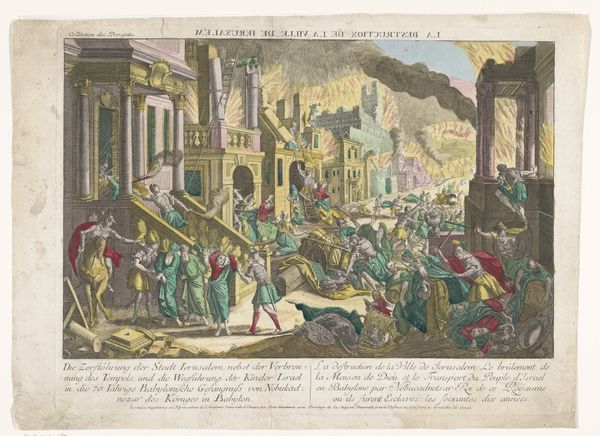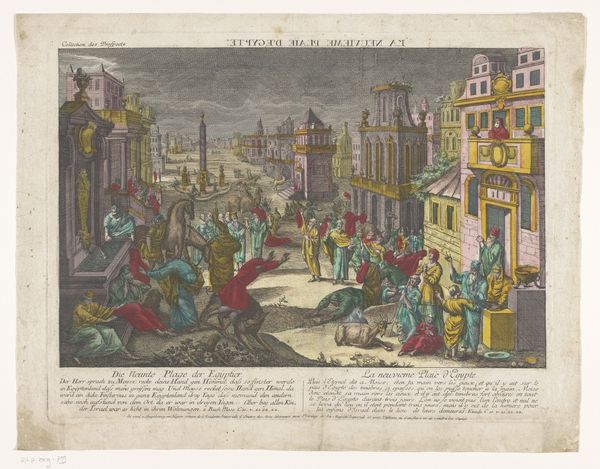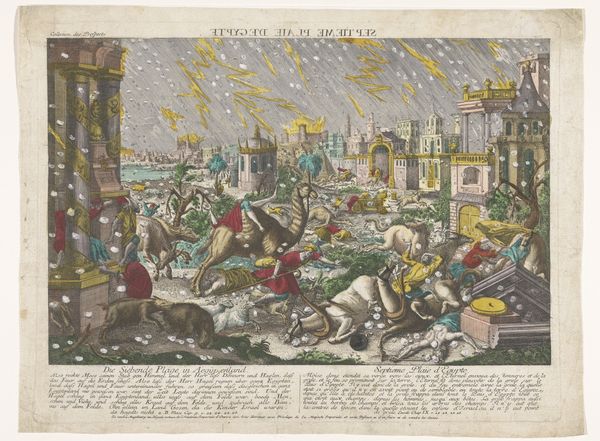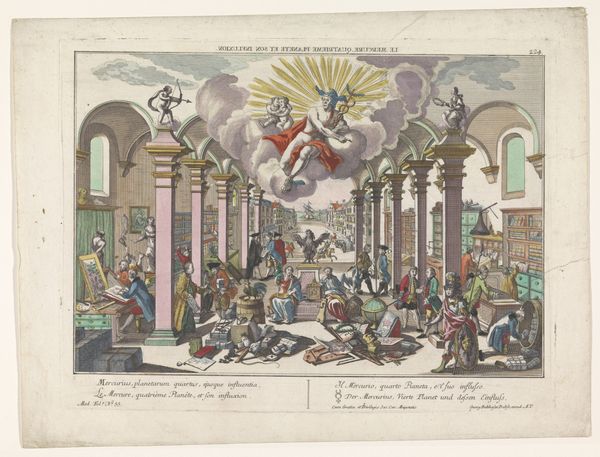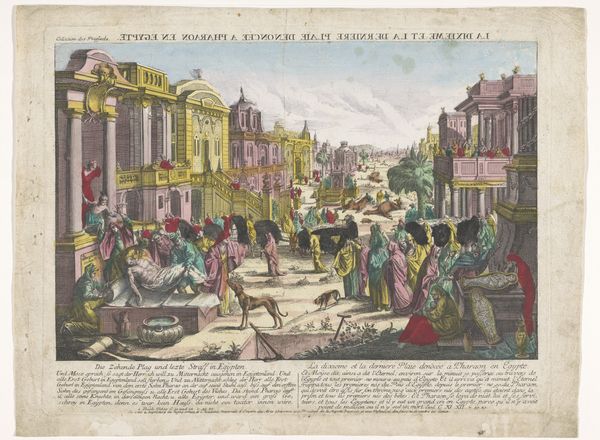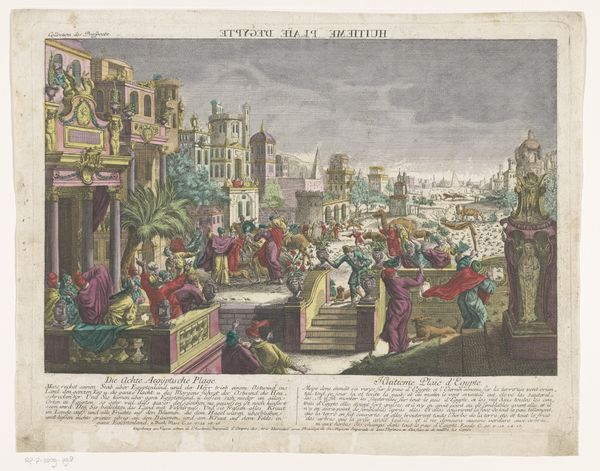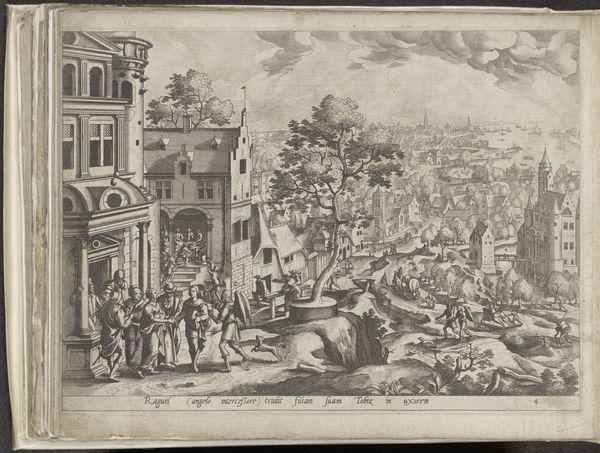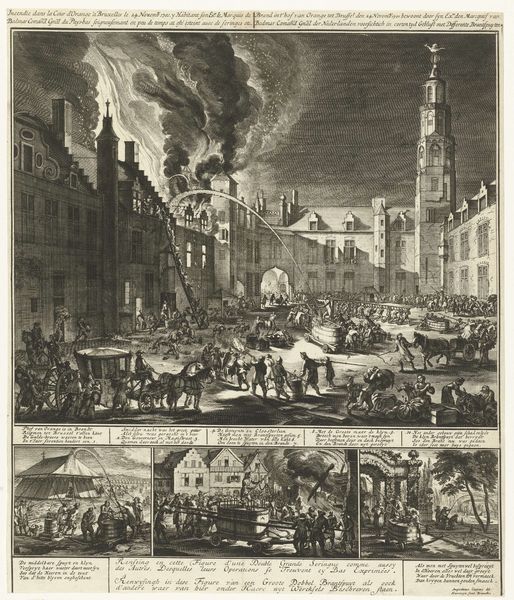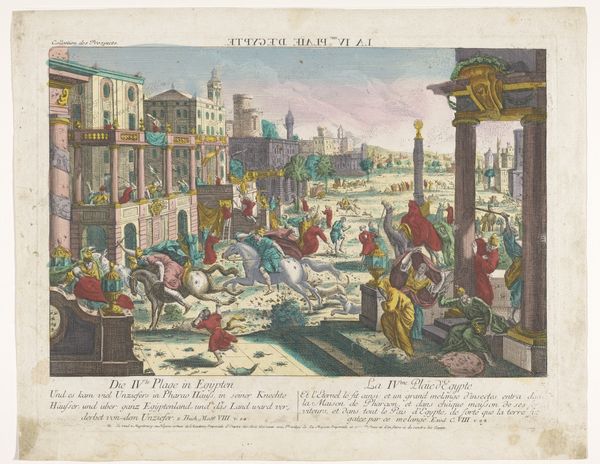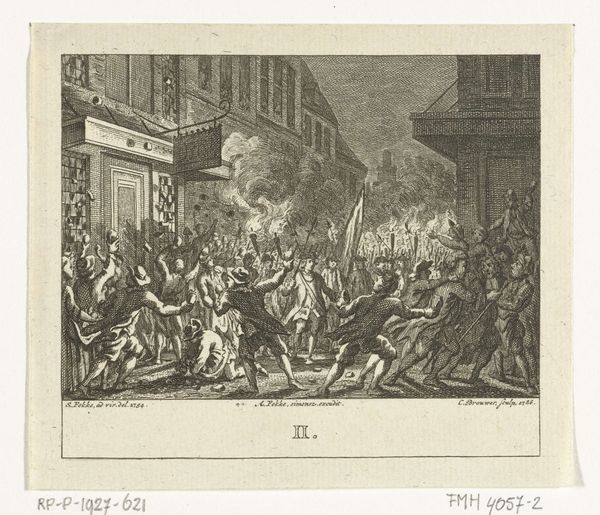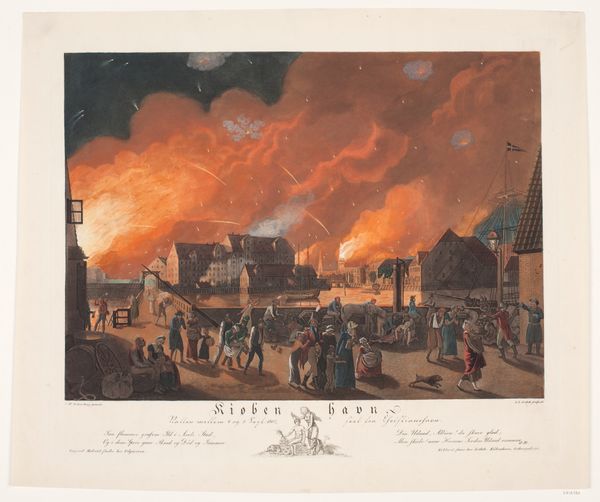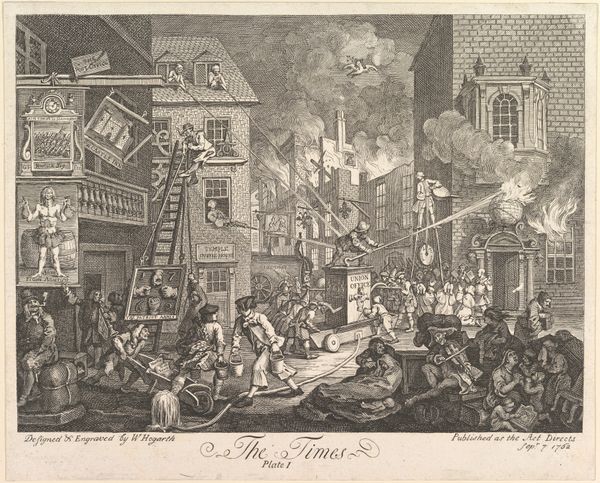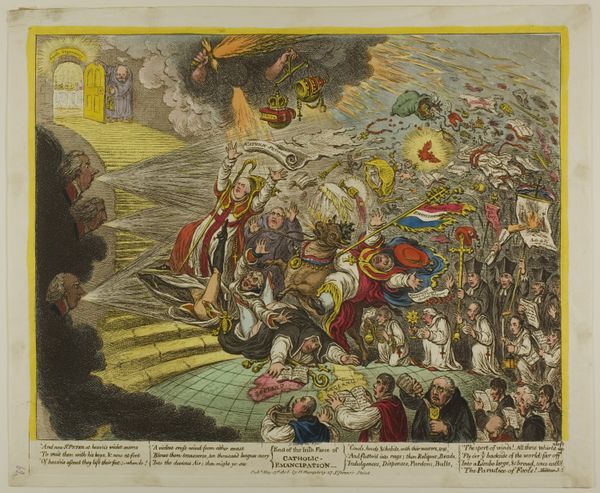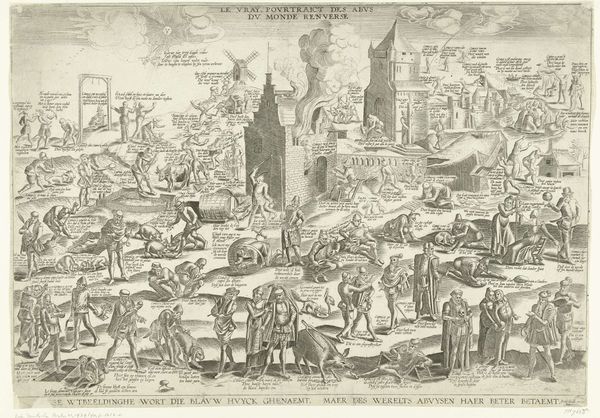
Dimensions: height 327 mm, width 430 mm
Copyright: Rijks Museum: Open Domain
Editor: This mixed-media print, "De Zesde Plaaq in Egypte" or "The Sixth Plague in Egypt," dating back to the late 18th century, presents a scene of chaos. It looks like some type of epidemic, a plague maybe. The architecture seems important, but I don't really get what's going on... What do you see in this work? Curator: This Baroque print depicts a powerful biblical scene through a lens of societal disruption and divine intervention, focusing on power structures. How are those in power, like Pharaoh and his magicians, rendered helpless? What does it suggest about societal hierarchies in times of crisis? Notice how the artist chose to portray the afflicted and the unconcerned, perhaps mirroring the social stratification prevalent during its creation. How does this plague narrative serve as a critique of unchecked authority? Editor: So, you’re saying the artist is less interested in the religious aspect and more in making a commentary about social power and control? Curator: Exactly! The print invites us to consider who benefits from systems of authority and who suffers when those systems are challenged or crumble under the weight of catastrophe. Think of how epidemics disproportionately affect marginalized communities. Editor: That’s a fascinating way to consider historical artwork—connecting it to current discussions around social justice. Thanks for broadening my understanding! Curator: And thank you for your insightful questions! It’s crucial to examine how art from the past continues to speak to our present concerns, offering potent reflections on human experience and political dynamics.
Comments
No comments
Be the first to comment and join the conversation on the ultimate creative platform.
